Nudibranchs, also known as sea slugs, are fascinating creatures. They come in a very wide variety of sizes, shapes, and colors, making them very popular with biologists, aquarium hobbyists, and collectors of toys representing interesting and unique animal taxa. There are over 3,000 valid described species! There have been several nudibranch-centric sets made over the years. One of the oldest and most sought-after is the set of six made by Play Visions in 1996. Yujin made a set (year unknown, but probably early 2000s) that consisted of 10 species. Kitan Club made a set of strap and magnet figures in 2012 which consisted of eight species. Individual figures, or figures in sets not devoted to nudibranchs, have also been made by Ikimon, Safari Ltd., Agatsuma Entertainment, and Cadbury (Yowies), among others. In total there are nearly 30 species in toy/figure form (a lot it seems, but still one-hundredth of the described species!). Today we are looking at a recently-released set by Rainbow, which consists of five species. The figures are made of polystone, rather than the usual PVC plastic, and are designed to be rests for chop sticks! Still, they are advertised as ‘gashapon’ toys. I decided to give this set a try, because four of the species are new to me (and from what I can tell, three are completely new to our hobby). They are all between 4.5-5.5 cm, comparable to plastic gashapon animals. The polystone does make them more fragile; two arrived with broken rhinophores (the horn-like sensory organs at the anterior end), even being secure within their original gashapon capsules (nothing a little Gorilla Glue couldn’t handle, however). They are slightly stylized, but not to the extent that they stand out next to their plastic counterparts.
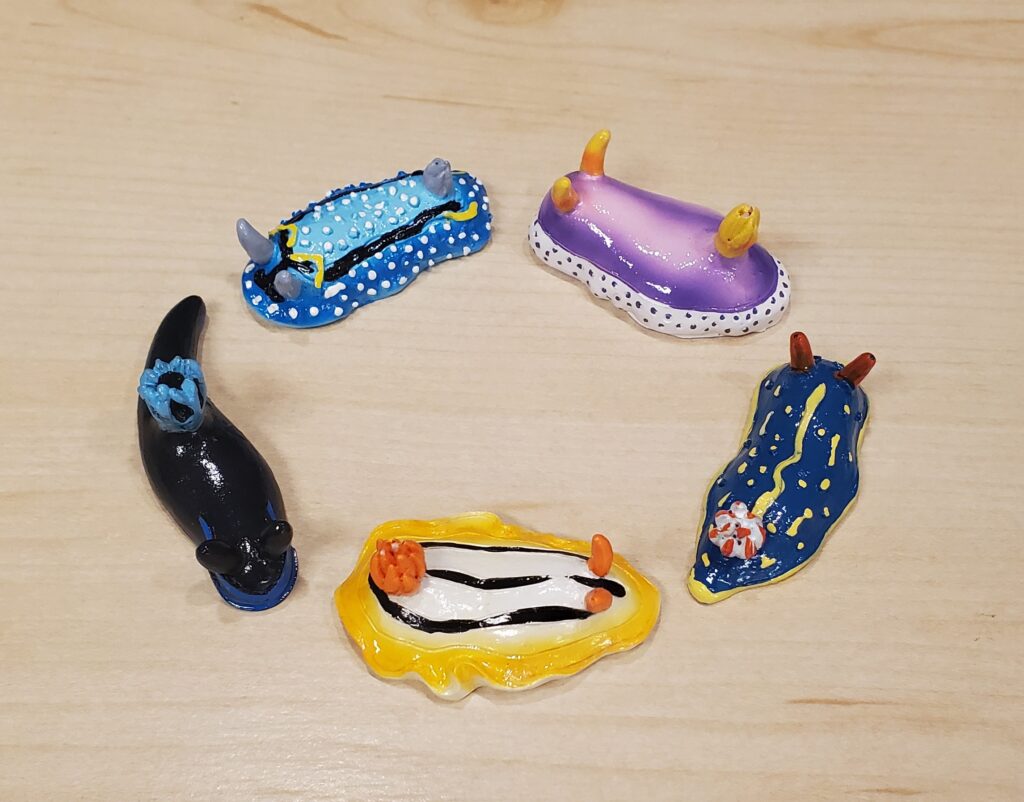
Hypselodoris apolegma
This species occurs on reefs in the West Pacific at depths of 1-20 meters. This species is morphologically very similar to H. bullocki, which is one of the most commonly made species of nudibranch in our hobby (not that any of them can be considered ‘common’). Hypselodoris apolegma is a brighter pink with a more prominent white border along the mantle. It has been suggested that H. apolegma might just be a color variant of H. bullocki. The figure measures 4.5 cm for a scale of 2.25:1-1.5:1. This species was previously produced by Yujin.
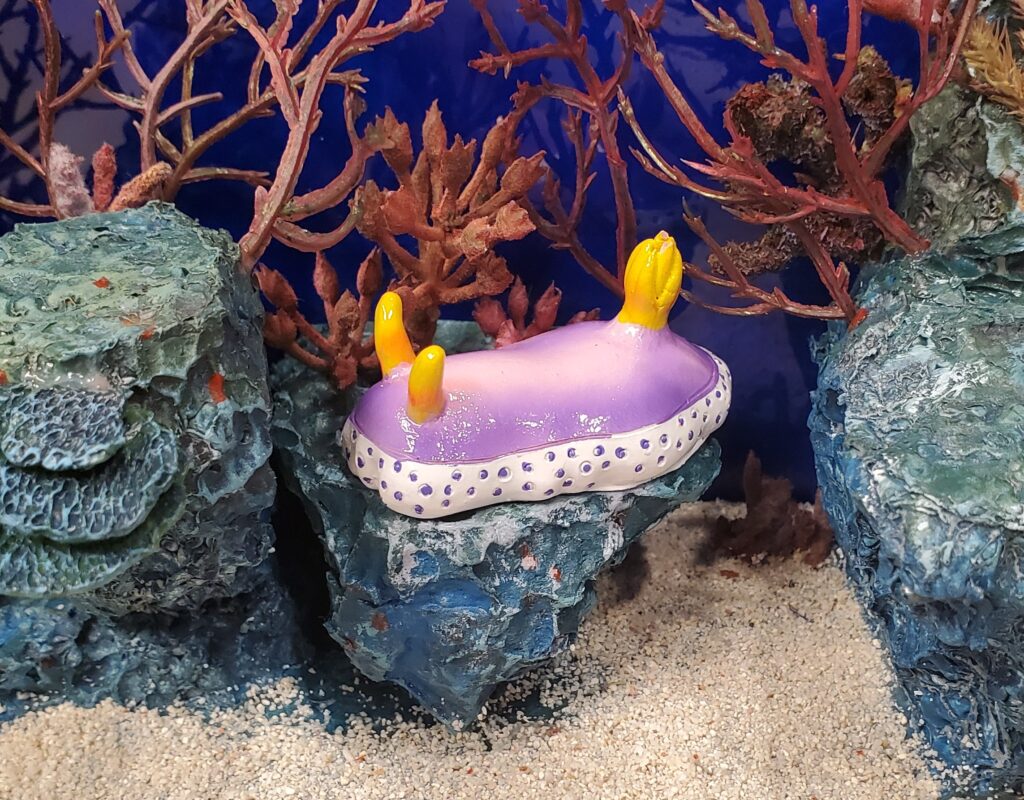
Chromodoris magnifica
This species occurs in the West Pacific around Indonesia, Papua New Guinea, and eastern Australia. It occurs on reefs (including the Great Barrier Reef) at depths of 5-30 meters. It is a larger species, and at 4.5 cm, this figure scales at 1:1.3. In nature, the species is highly variable in color. From what I can tell, this figure is unique for this species.
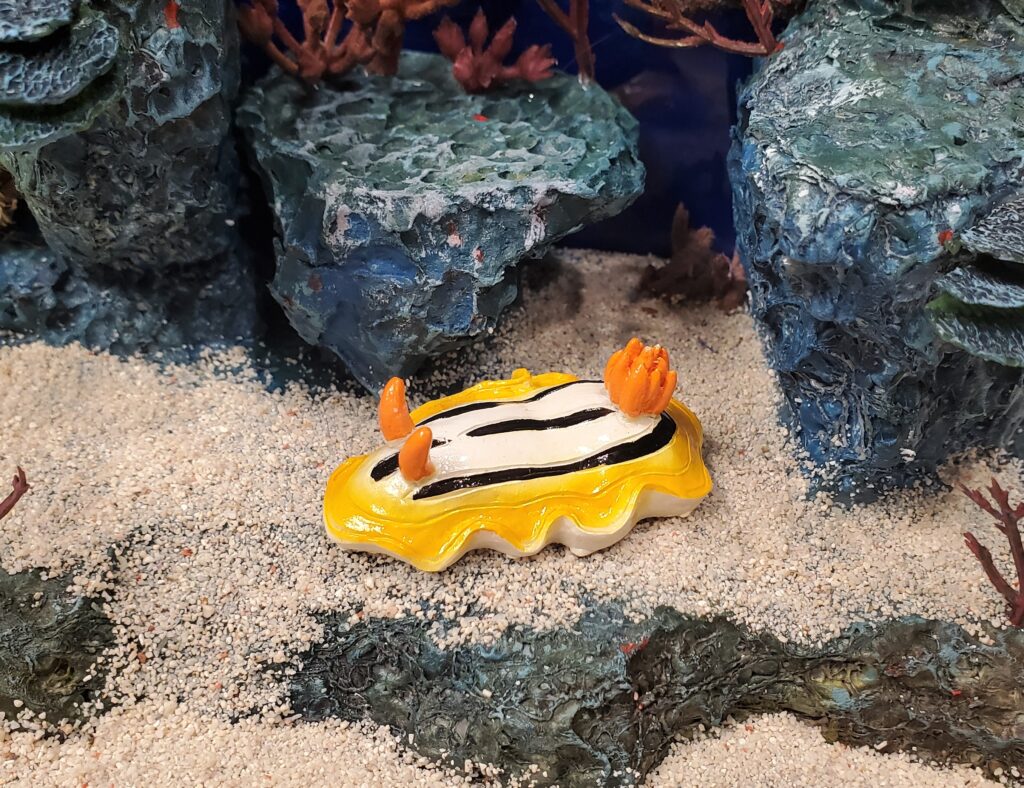
Aldisa abtatrossae
This species is widespread in the Indo-West Pacific, associated with reefs at depths of 3-72 meters. It is believed to mimic nudibranchs in the genus Phyllidiella. This figure is 4.5 cm for a scale of 4:1-2:1, or twice natural size for a large specimen. From what I can tell, this figure is unique for this species.
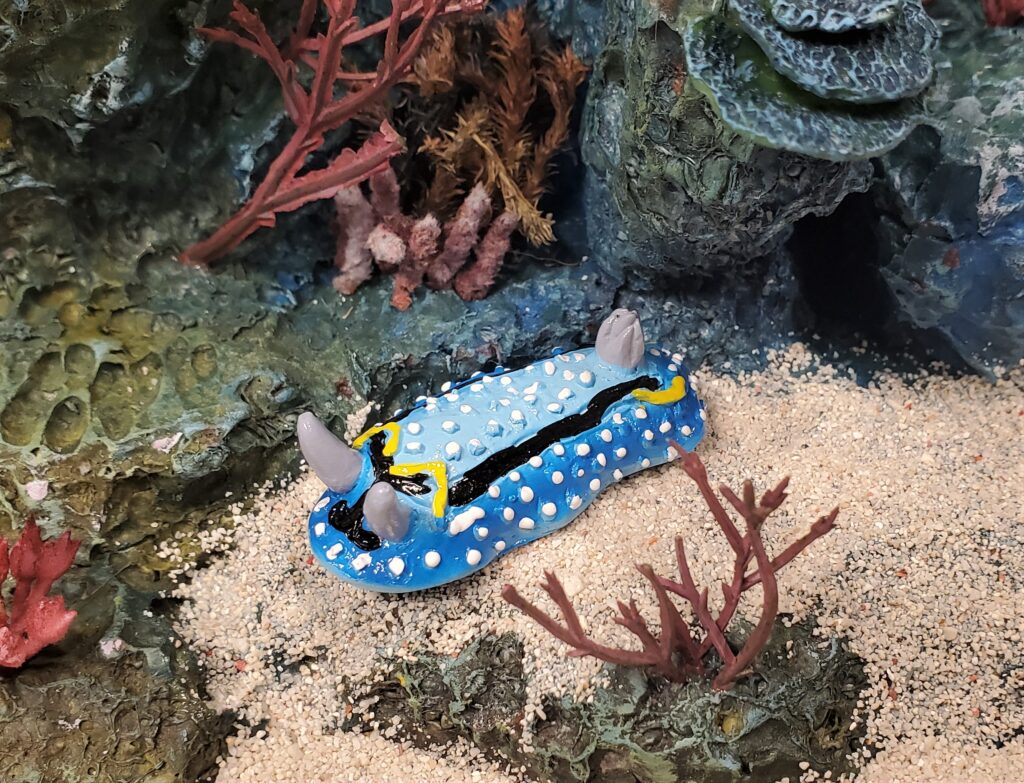
Tambja morosa
Also known as the gloomy nudibranch, this species occurs on reefs throughout much of the Indo-West Pacific, from the Philippines and Indonesia to Hawaii and New Zealand. It tends to occur at shallower depths, usually from 1-4 meters. It is another larger species and at approximately 5.5 cm, this figure scales at 1.3:1 for a large specimen. To my knowledge, this figure is unique for this species.

Hypselodoris festiva
Commonly referred to as the blue dorid, this common and familiar species has been previously made by Kaiyodo, Kitan Club (more than once), Ikimon, and Yujin. Historically, there has been confusion around the identity of this species, but as presently delineated, it is endemic to the waters around Japan, Hong Kong, and the Korean Peninsula. It is a demersal species, occurring at depths of 0-15 meters. The figure is 5.0 cm for a scale of 1.6:1.
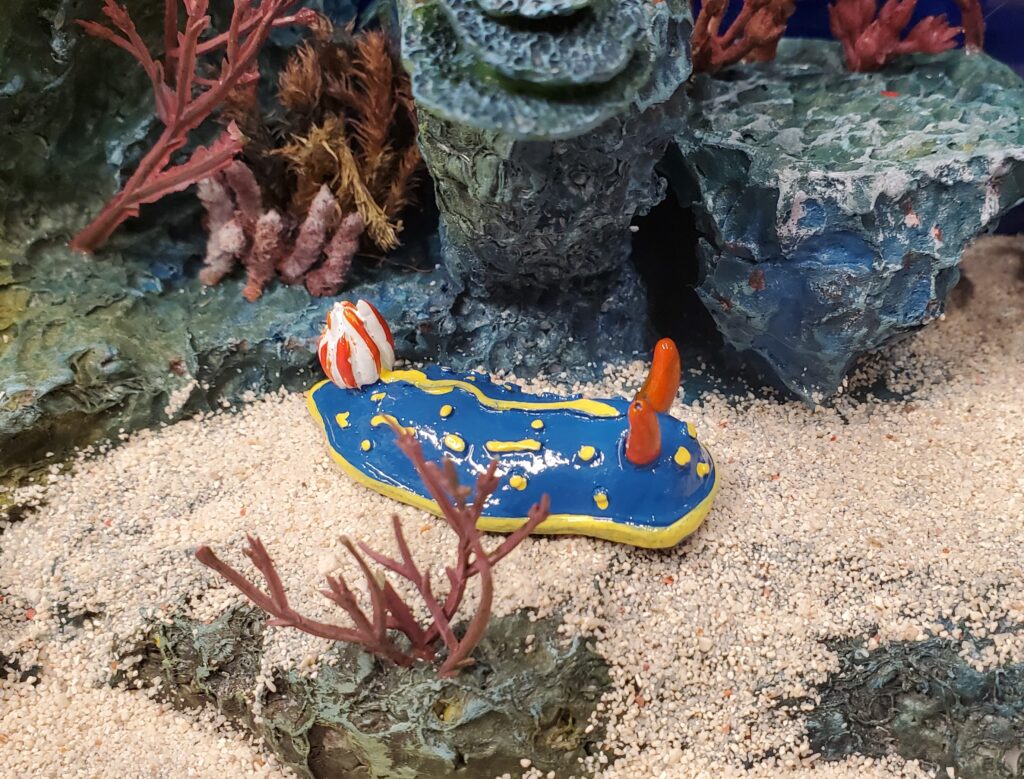
Overall, if you are a collector of interesting, rare, and unique taxa, this set comes recommended. Despite the chop stick rest gimmick, and the fact they are made of polystone and slightly stylized, they are still nice and comparable to their PVC counterparts. The only other option for three of them is to wait for plastic versions to come out, which could be anytime between soon to never. Most of the previous sets of nudibranchs are retired, and individual figures can be rare and expensive when found. Looking at my database, I have about 17 species of nudibranchs, and until now I never bought a complete set, rather piecemealing them as I find them on eBay or other resources.
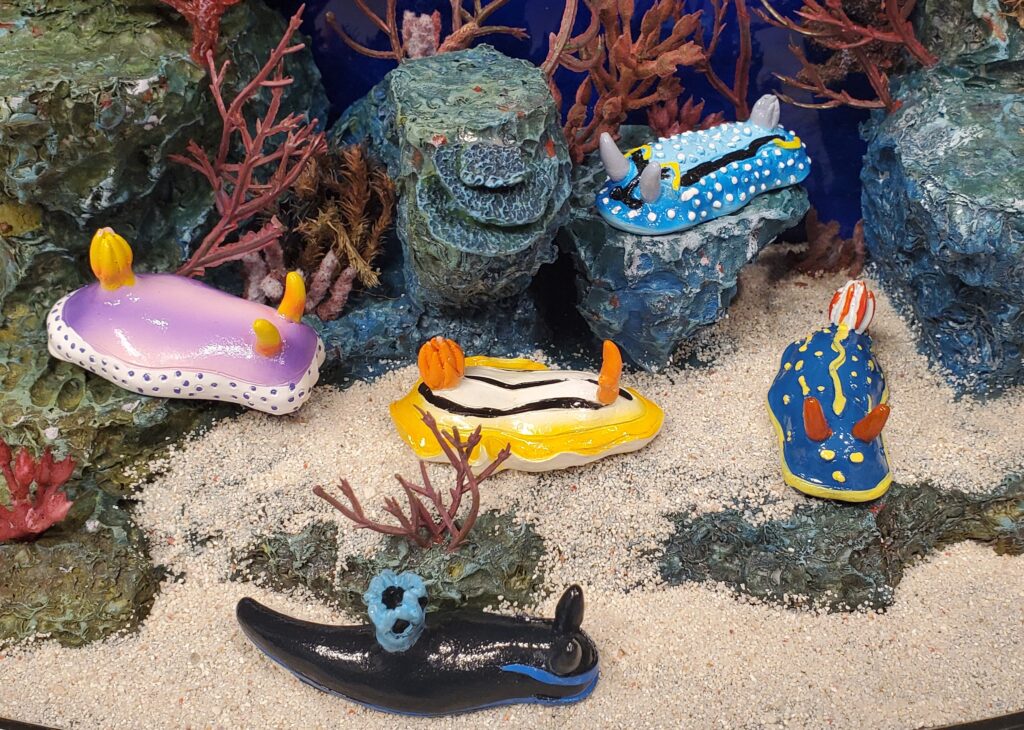
Disclaimer: links to Ebay and Amazon on the AnimalToyBlog are affiliate links, so we make a small commission if you use them. Thanks for supporting us!




A very unique set, thanks for sharing! Sets like these make me wish Safari was more daring with their TOOBS. A TOOB of sea slugs would be fantastic.